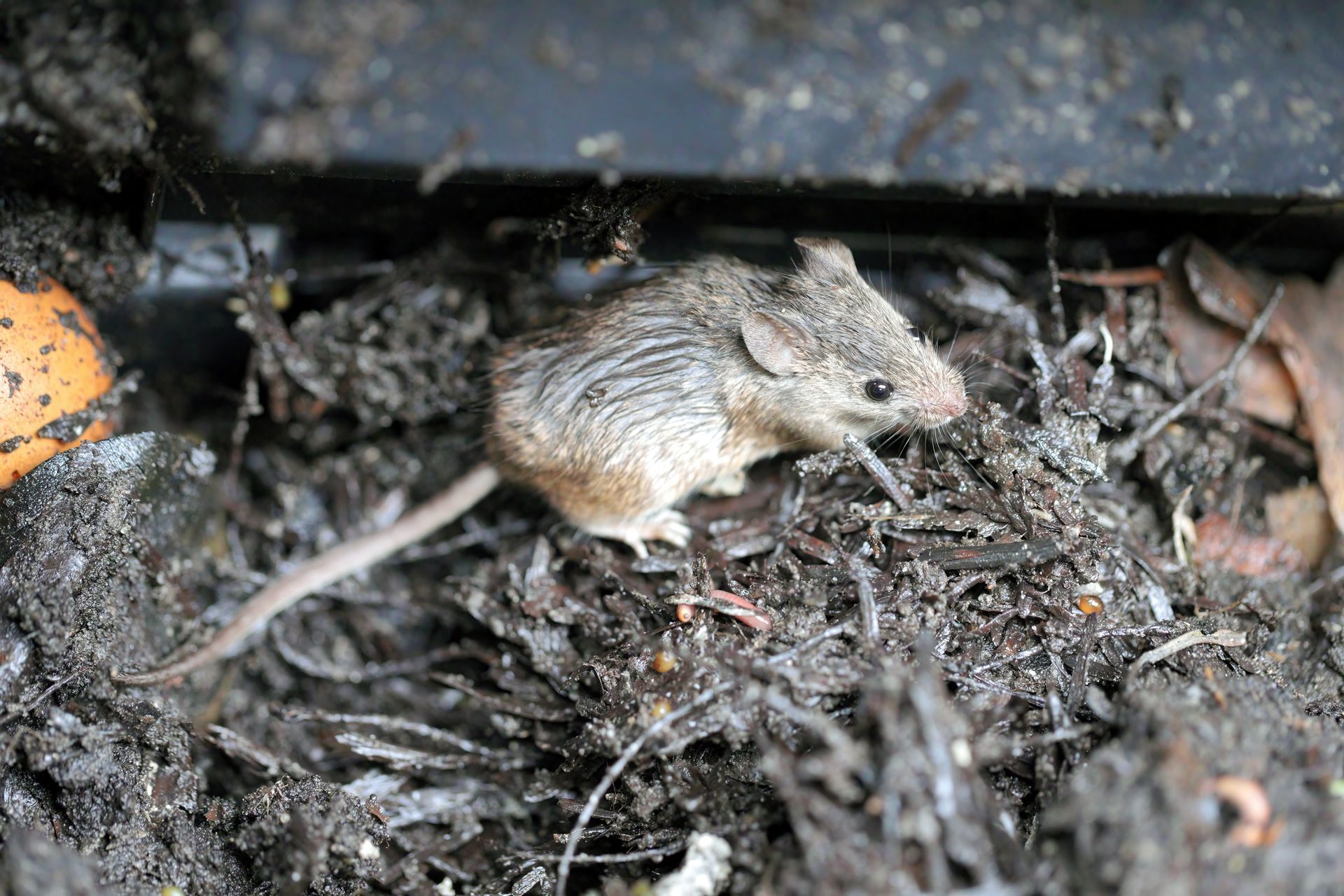Types Of Ants
Different Types of Ants Commonly Found in Your Home

Collectively, ants are a species that have permeated almost every corner of the planet. While there are thousands of sub-species that make up the ant species, combined their numbers are estimated to be as high as 20 quadrillion. While they share common ancestry, ant species have splintered with each species developing their own unique behavior and appearance.
16 Common Types of Ants
Carpenter Ant
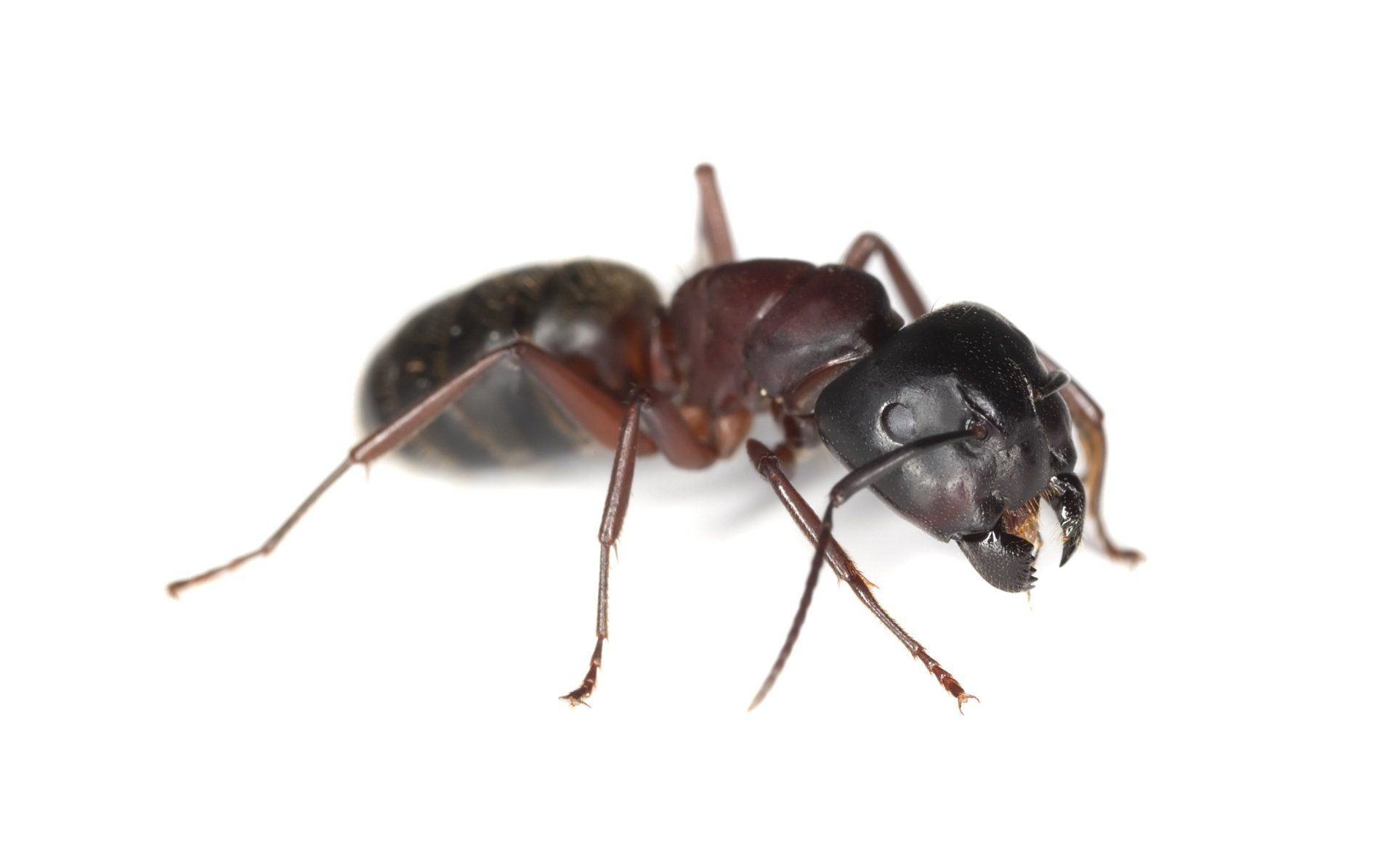
Appearance: Carpenter ants are big relative to many of the other species listed below. They come in at 5/8 inches and are often black, brown, or red.
Behavior: Carpenter ants will use their large mandibles to shred decaying or damaged wood to make space for a nest. They don’t actually consume the wood, but the damage done is severe once an infestation is present. They can create satellite colonies so once a colony has added multiple queens, they become extremely hard to exterminate.
Damage: This species of ant is extremely problematic due to the damage it does to wood. The damage carpenter ants inflict on wooden structures is comparable to termites .
Location: Carpenter ants are active in several states including the southwest USA.
Treatment: Use perimeter pesticide applications to prevent carpenter ants. Use baits to treat active colonies and any significant signs of carpenter ant damage should be inspected and treated by a professional immediately.
Fire Ant
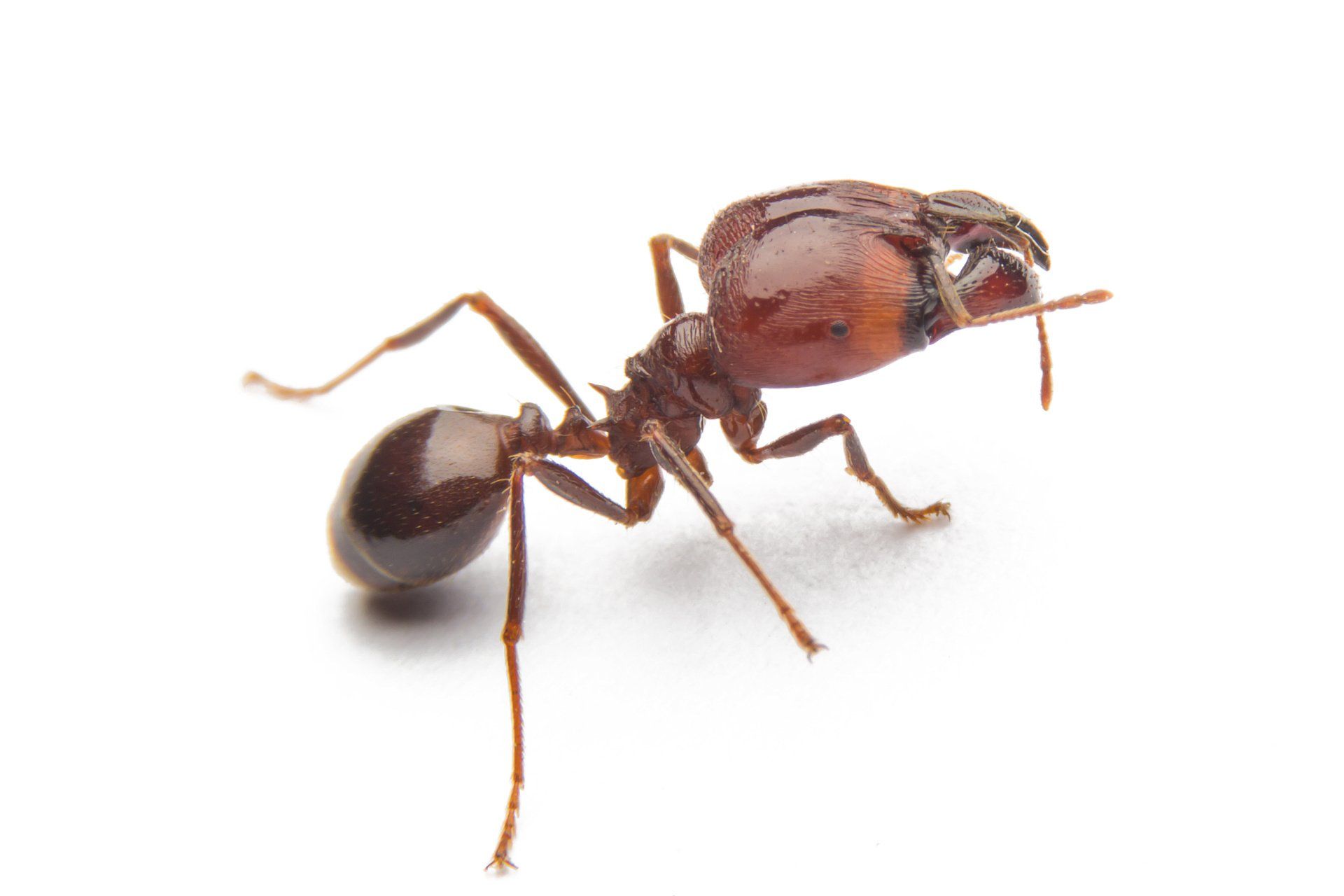
Appearance: They are typically a brownish red and on the smaller side at 1/8 – 1/4 inches
Behavior: Fire ants will aggressively swarm a threat so they can cause serious pain and discomfort if you happen to upset a colony by stepping on it or laying something down on top of it. These ants’ lifespan is only for a couple of months which is far shorter than other ant species.
Damage: They are known as fire ants due to the ability to deliver a painful sting. While not fatal for most people, these stings can trigger an allergic reaction which can be problematic for a select few.
Location: Fire ants are an invasive species native to South America and are common in the southwest US.
Location: Fire ants are an invasive species native to South America and are common in the southwest US.
Treatment: Baits and specific pesticides designed for fire ants are necessary to cause colony collapse. Due to the danger of having a large fire any colony close by, it is recommended that professional help is enlisted to exterminate the ant problem
Crazy Ant
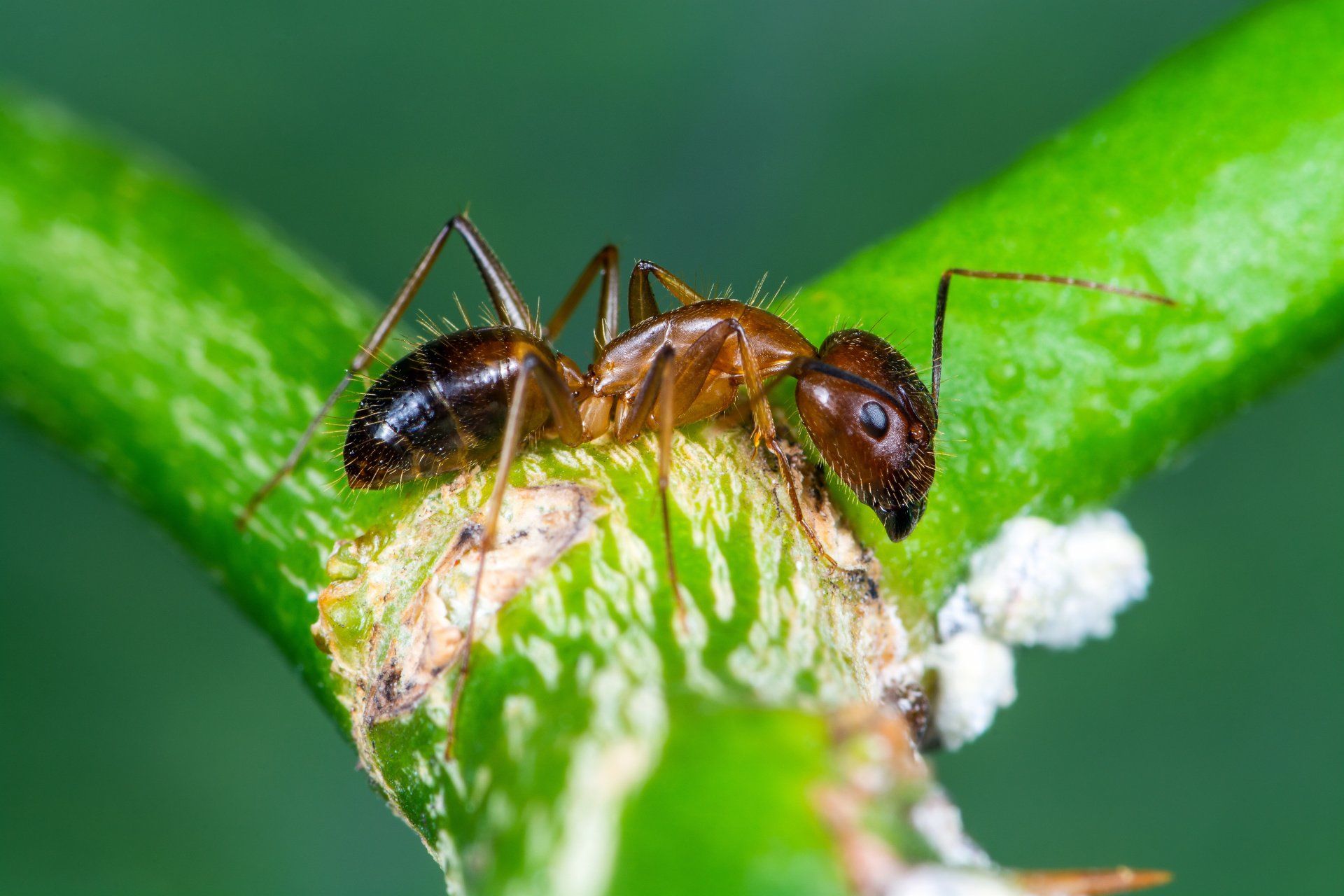
Appearance: These hairy ants are extremely small at 1/10 inches long and are dark brown or black.
Behavior: Crazy ants do not rely as much on pheromones to track where food is. This is why they move much more erratically compared to other ant species who almost walk in a single file line along a pheromone trail. They are capable of searching far from their nest which makes finding the colony difficult. It is also important to know that crazy ant colonies will have several queens that can keep the colony alive if the rest are exterminated.
Damage: Aside from general ant contamination risks, crazy ants are drawn to electrical components. They will cause damage to wiring and potentially cause short circuits.
Location: Southern and eastern United States; including CA and AZ.
Treatment: Crazy ant colonies are difficult to locate given the size of their territory. Using bait systems to use worker ants to distribute poison to their queen may be the most effective treatment method next to hiring professionals.
Little Black Ant
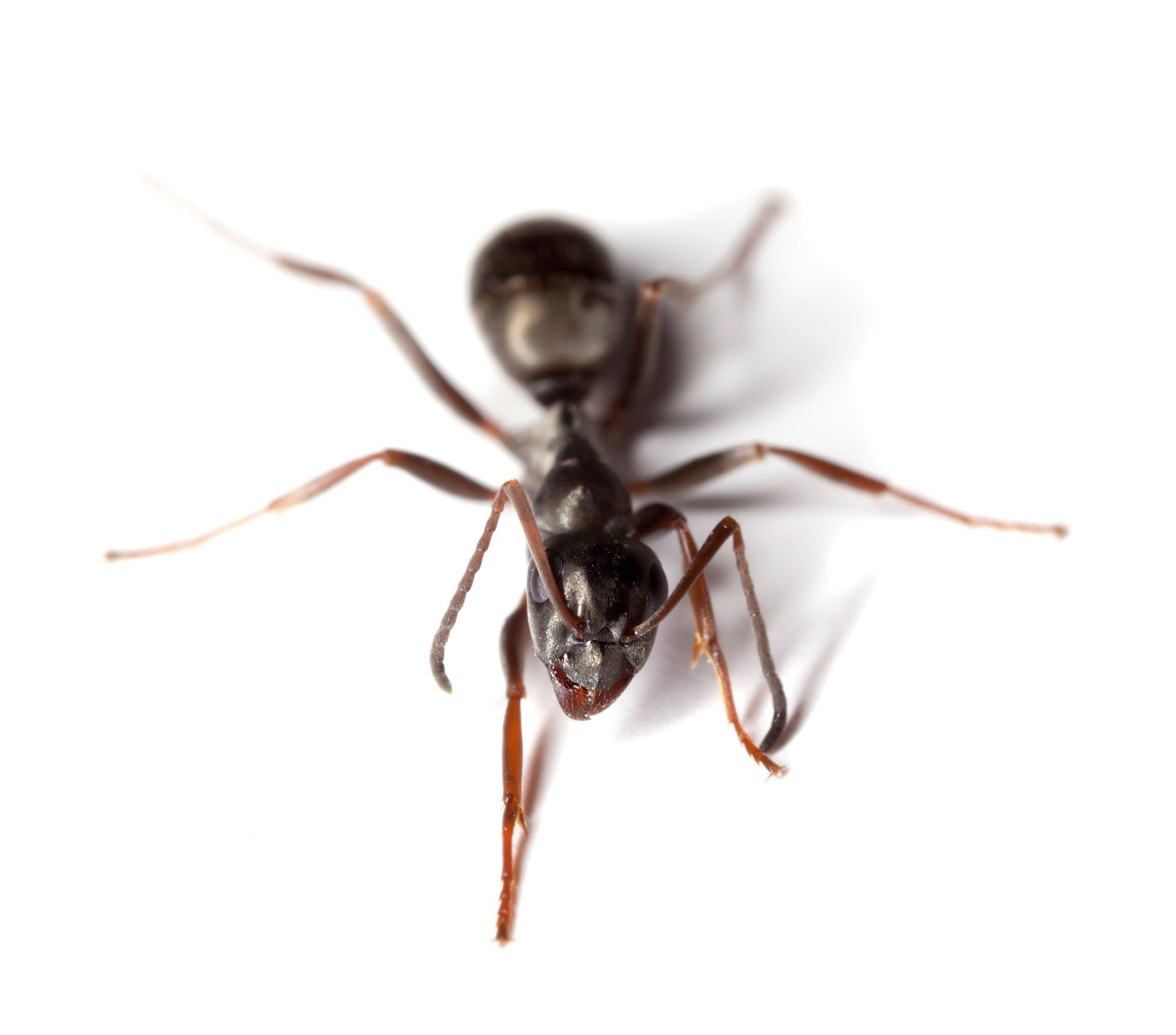
Appearance: These ants are also extremely small at <1/10 inches They are usually dark in color.
Behavior: Little black ants use pheromone trails left by other ants to find food. They build their colonies in dark undisturbed areas like wall cavities, under subfloors, and outside in places like rotting logs and decaying trees.
Location: Found all over the United States
Treatment: The best treatment for these ants is to use baits near foraging trails and perimeter pesticide applications to prevent them from coming inside.
Odorous Ant
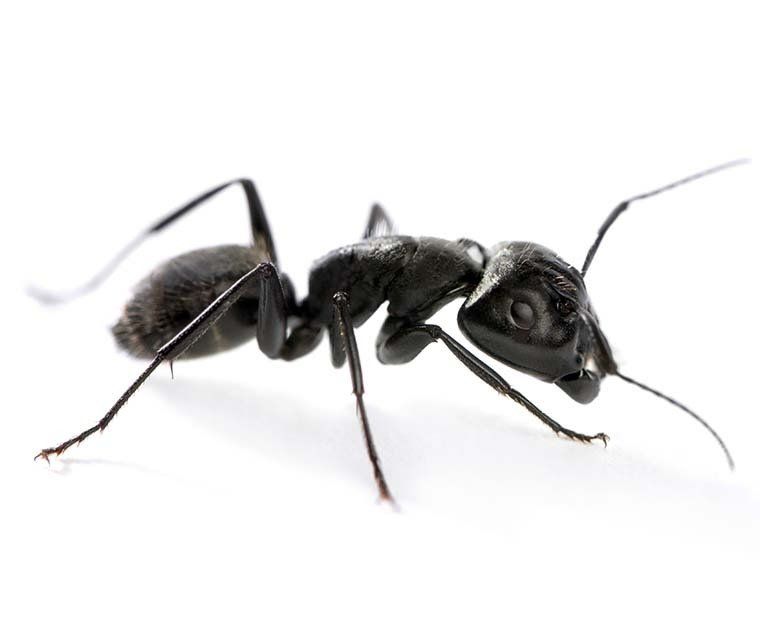
Appearance: The ants are black or brown and about 1/10 inches long.
Behavior: Odorous ants’ preferred foods are sweets and they are known to farm aphids for their honeydew. Their “odor” comes from the smell the leave when they are crushed. Colonies can grow to have several sub colonies with multiple queens and as many as tens of thousands of worker ants.
Location: Native to North America with populations existing far north in Canada and as far south as northern Mexico.
Treatment: Targeting foraging trails with common household ant pesticides should do the trick for small infestations; but baits and more thorough treatment may be needed if the problem persists.
Pharaoh Ant
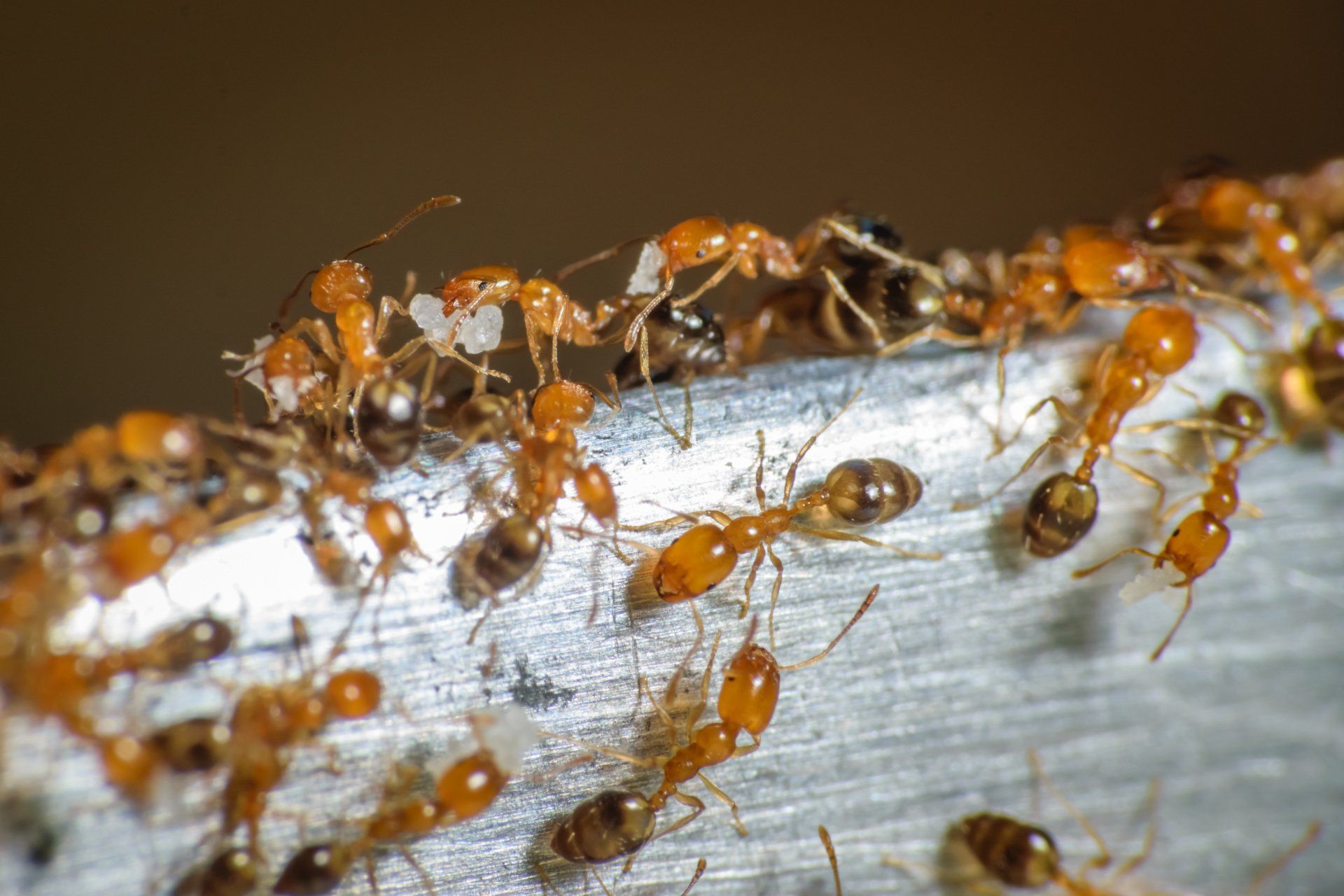
Appearance: Pharaoh ants are small at 1/16 in long and are light brown to dark yellow in color.
Behavior: Pharaoh ants use several pheromone markers to help guide the rest of the workers. They use this method of communication to build large networks of sub colonies, each with their own queen.
Damage: While these ants aren’t known to cause significant damage, they are capable of spreading salmonella and streptococcus.
Location: These ants are a pervasive nuisance pest found all over the world, but they prefer tropical to temperate climates.
Treatment: Treating pharaoh ant can be hard due to the placement of their colonies. Baits are effective at being spread throughout a colony to ensure that the colony collapses.
Pavement Ant
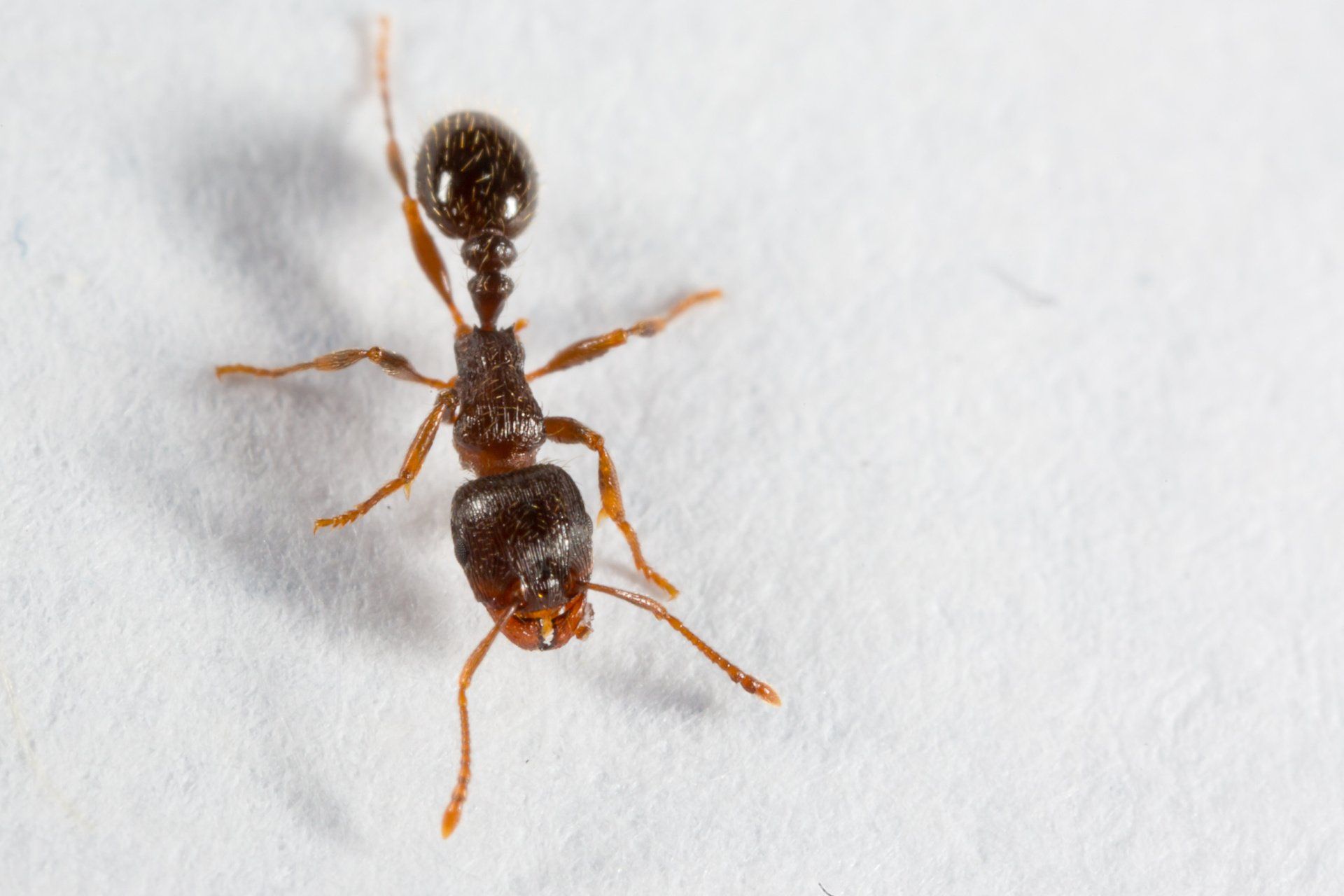
Appearance: These ants are brown to black and are between 1/8 – 1/16 inches long.
Behavior: Prefers to build colonies outside along curbs and cracks in pavement or foundation.
Location: They are found in the northern and western US and reach as far south as southern California.
Treatment: Exterior perimeter pesticide application should prevent these insects from finding their way inside. If pavement ants have created an interior colony, it will most likely be in a wall cavity or subfloor where it likely won’t be disturbed.
Argentine Ant
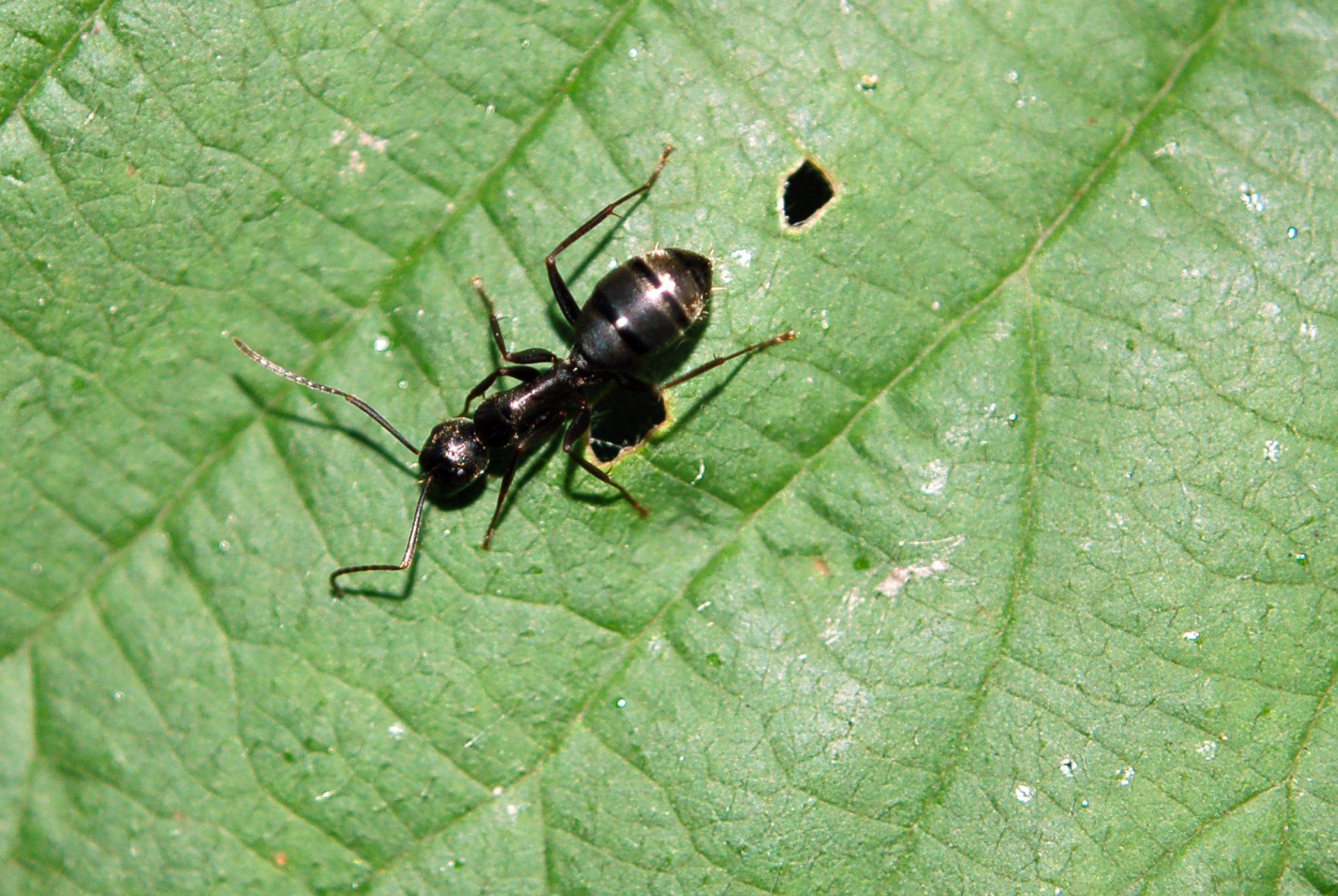
Appearance: Argentine ants are roughly 1/10 inches long and dark brown.
Behavior: Normally different ant species will fight amongst themselves in pursuit of resources, but Argentine ants peacefully coexist with other Argentine ants. This has been theorized to be because Argentine ants are part of a global “super colony.” This collection of colonies has been said to be as complex as the sprawl of humankind and spans across multiple continents.
Location: Argentine ants have become prevalent almost everywhere in the world and exist on 6 continents and across several islands around the globe. They are an invasive species that gets introduced by humans to new places around the world.
Treatment: These ants can be treated easily with different pesticides and bait systems. Borax or boric acid can also be used to a similar effect as the baits and borax will be taken back to the colony for the queen to consume.
Leafcutter Ant
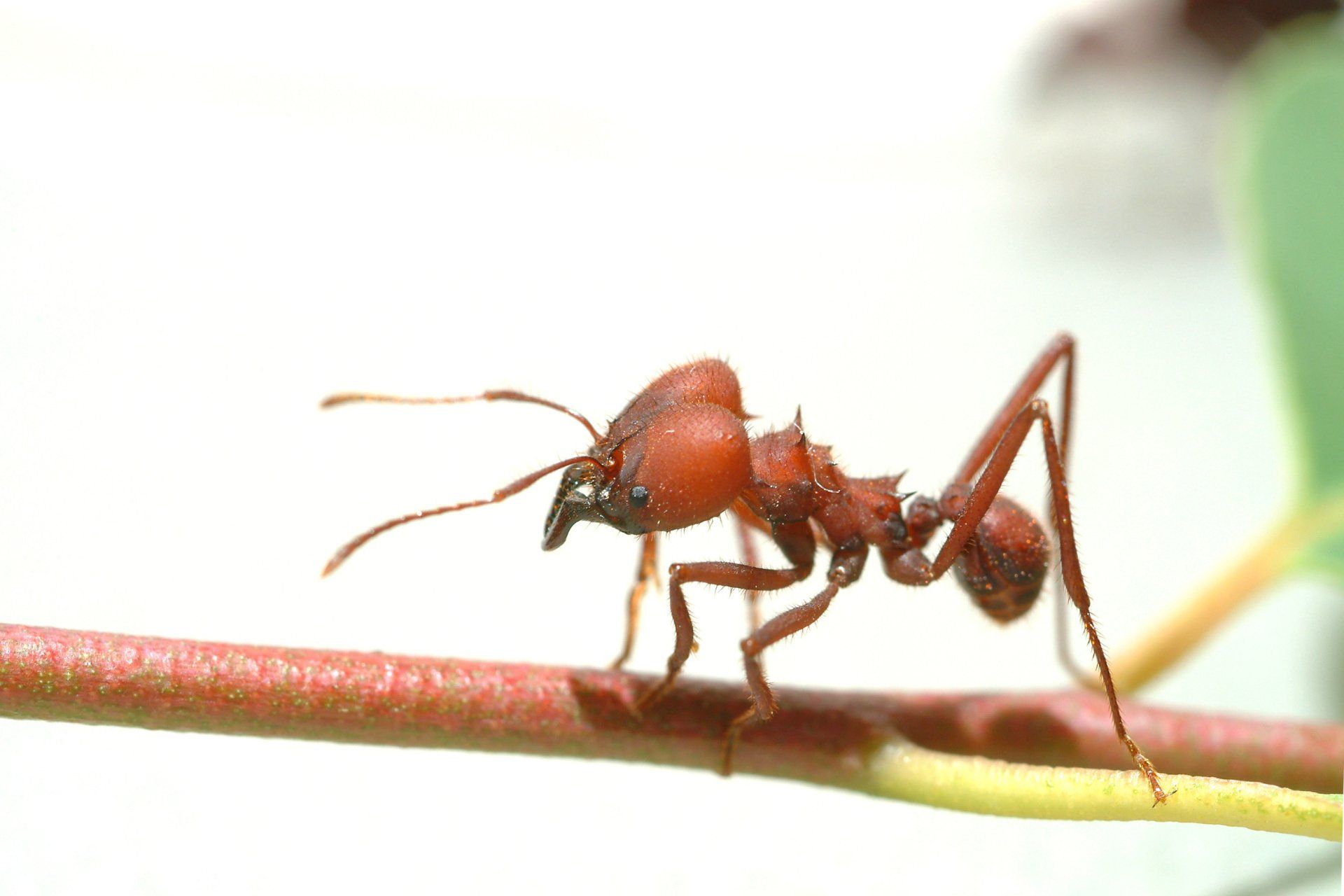
Appearance: Leafcutters are between 1/16 – 1/2 inches long and are brown in color.
Behavior: Leafcutter ants are one of 3 species of bugs to harvest fungi. They use their mandibles to cut leaves so they can carry the plant matter back to their farms to use as substrate. The fungus is used to feed the ant larvae while adults feed on the sap.
Damage: Leafcutter ant populations can reach the tens of millions at maximum capacity making them some of the most complex super colonies. This number of leafcutter ants can cause immense damage to surrounding plant life by defoliating crops and vegetation.
Location: These ants can be found in the southern states of the US.
Treatment: Because leafcutter ants primarily feed on fungus and sap, the best way to treat them is foliar sprays. Baits are another effective treatment strategy, but they need to be specifically for leafcutter ants.
White Footed Ant
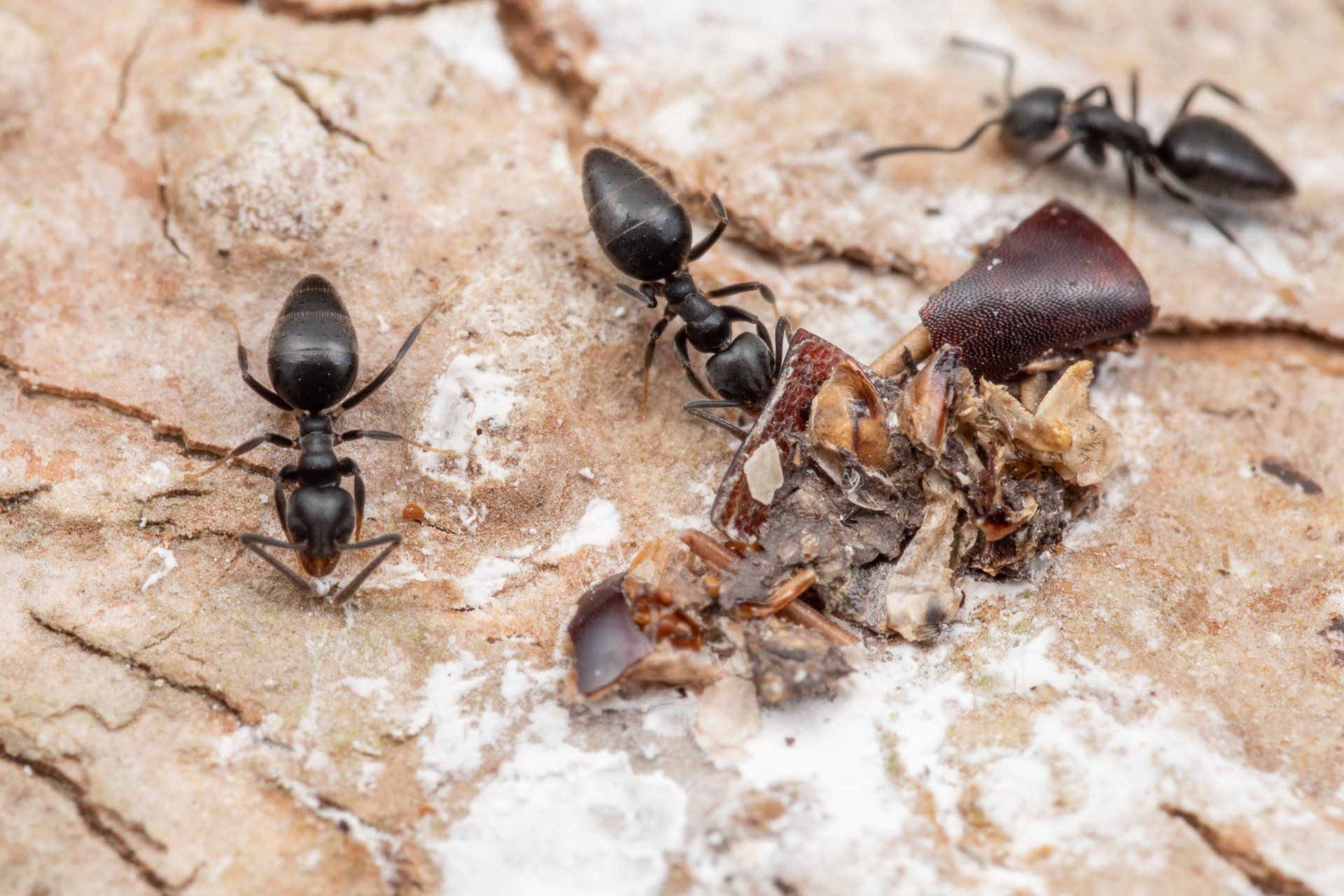
Appearance: White footed ants are about 1/8 inches long and are black with lighter color feet.
Behavior: White footed ant colonies can grow to include multiple queens and millions of ants over a large space. Even if white footed ants are wiped out on one property, if there are satellite colonies that exist on neighboring property, the ants will come back quickly.
Location: Found in southern US states like Florida and have slowly been spreading through the south reaching as far as California.
Treatment: These ants are extremely hard to treat because they do not fall for bait stations. This makes killing off the queens difficult which means that the colonies will continue to live on even if parts of it get wiped out. Using effective ant repellents like vinegar, pepper, or lemon juice can also keep these ants away.
Thief Ant
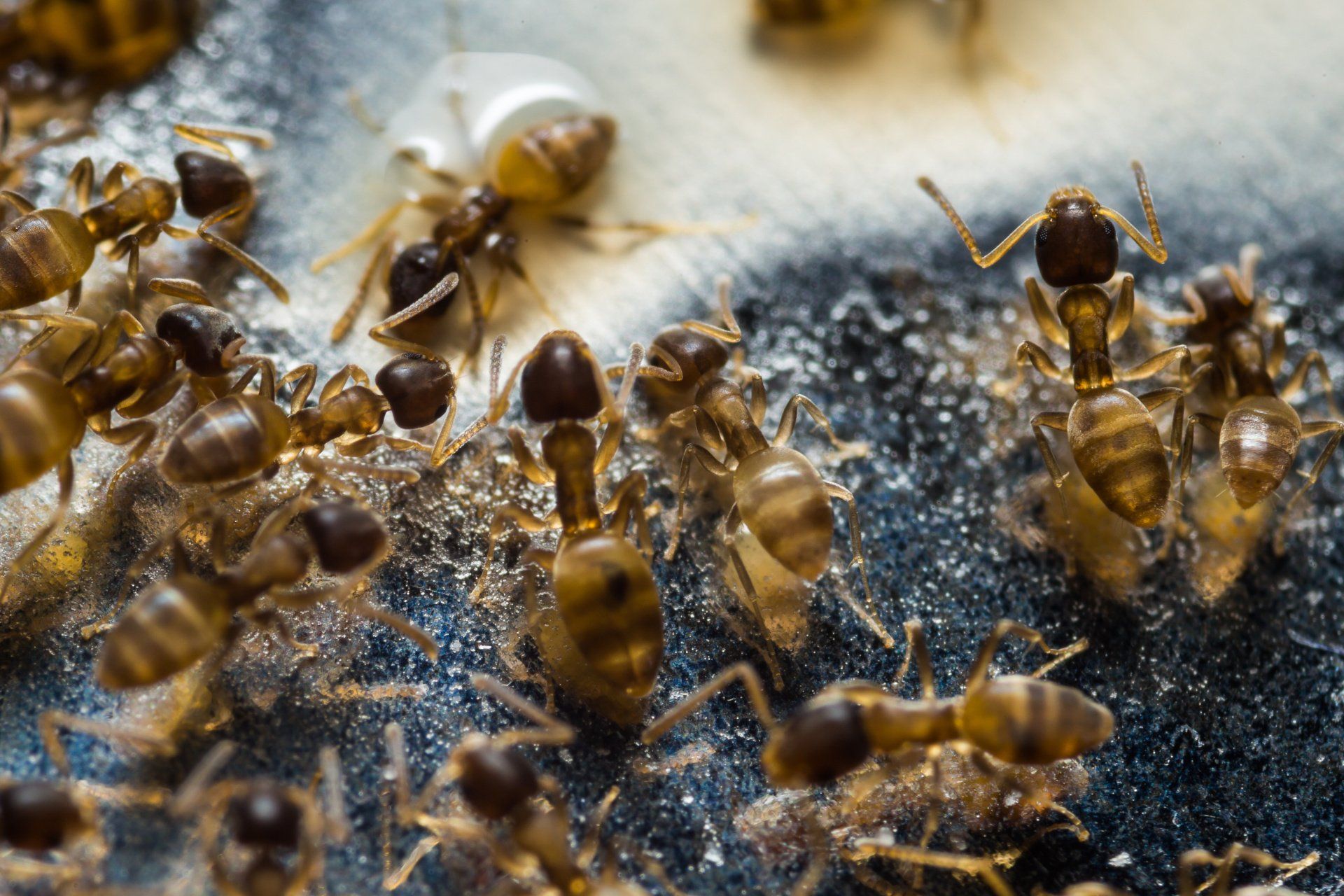
Appearance: These tiny ants are 1/16 inches long and are yellowish brown.
Behavior: These ants earned the name thief ants because they will establish a colony close to another ant colony and steal larvae from other ant colonies.
Damage: Thief ants are one of the smallest species which makes them able to access just about anything that isn’t sealed well. They will infest an area quickly if they find sources of food to sustain a colony.
Location: These ants are found all over the US but are most prevalent in eastern and central states.
Treatment: Using baiting systems and chemical pesticides are the most effective way to treat for thief ants.
Pyramid Ant
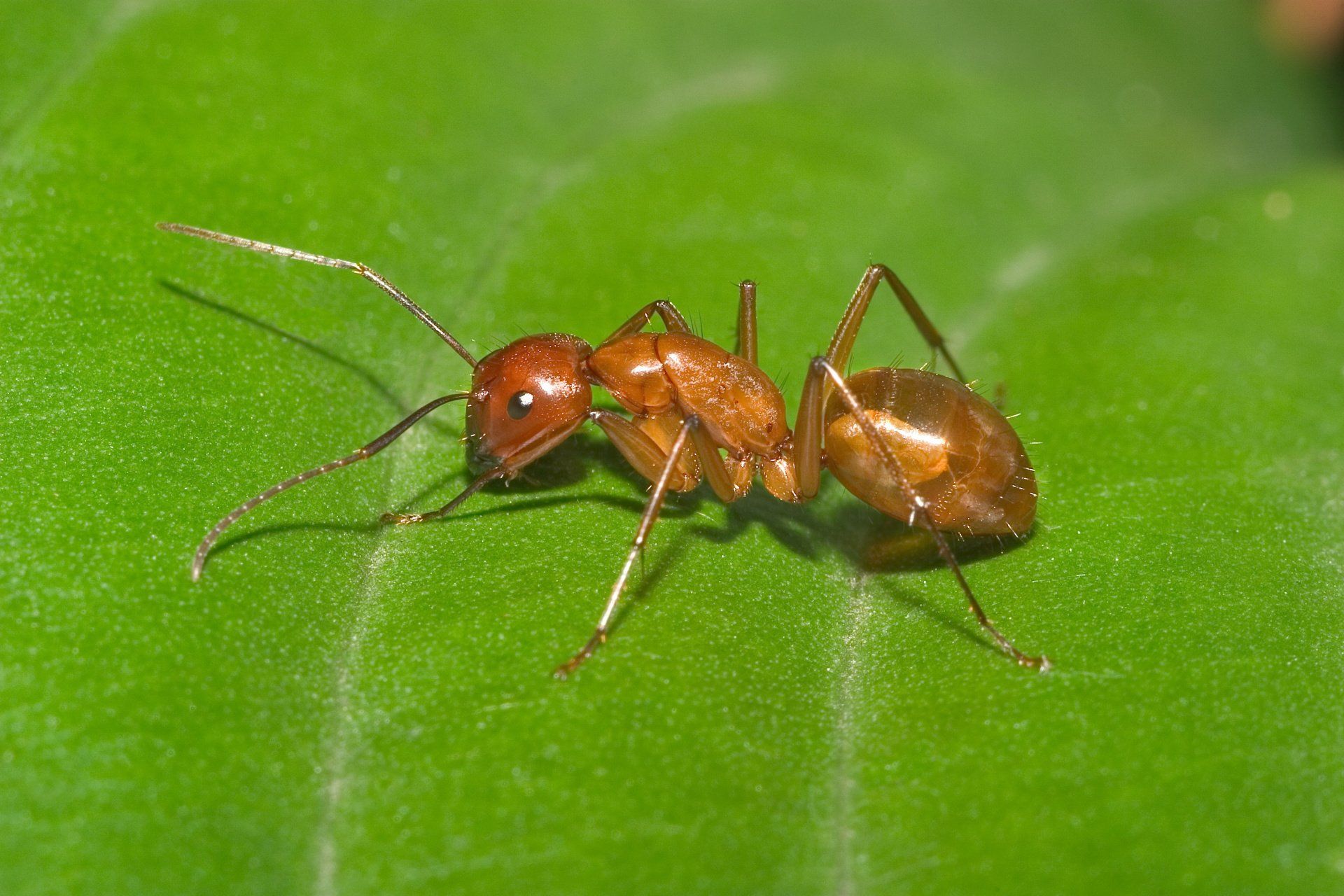
Appearance: Pyramid ants are generally between 1/16 and 1/8 inches long and have a dark body and head.
Behavior: These ants prefer to nest outside in open areas and will rarely go inside unless in search of food or resources. Their colonies will only have one queen with only a few thousand workers. Pyramid ants can be a beneficial pest because they feed on other insect including fire ants.
Damage: Pyramid ants will create unsightly mounds outside but beyond that they act as a beneficial ant that helps control other pest populations.
Location: Pyramid ants are found in several states across the US with the largest populations thriving in the south.
Treatment: These colonies usually have a single mound like entrance that can be treated with pesticides or baits to collapse the entire colony. Due to their size and structure, boiling water can also be poured into the mound with a high likelihood that the queen will be terminated in the process.
Harvester Ant
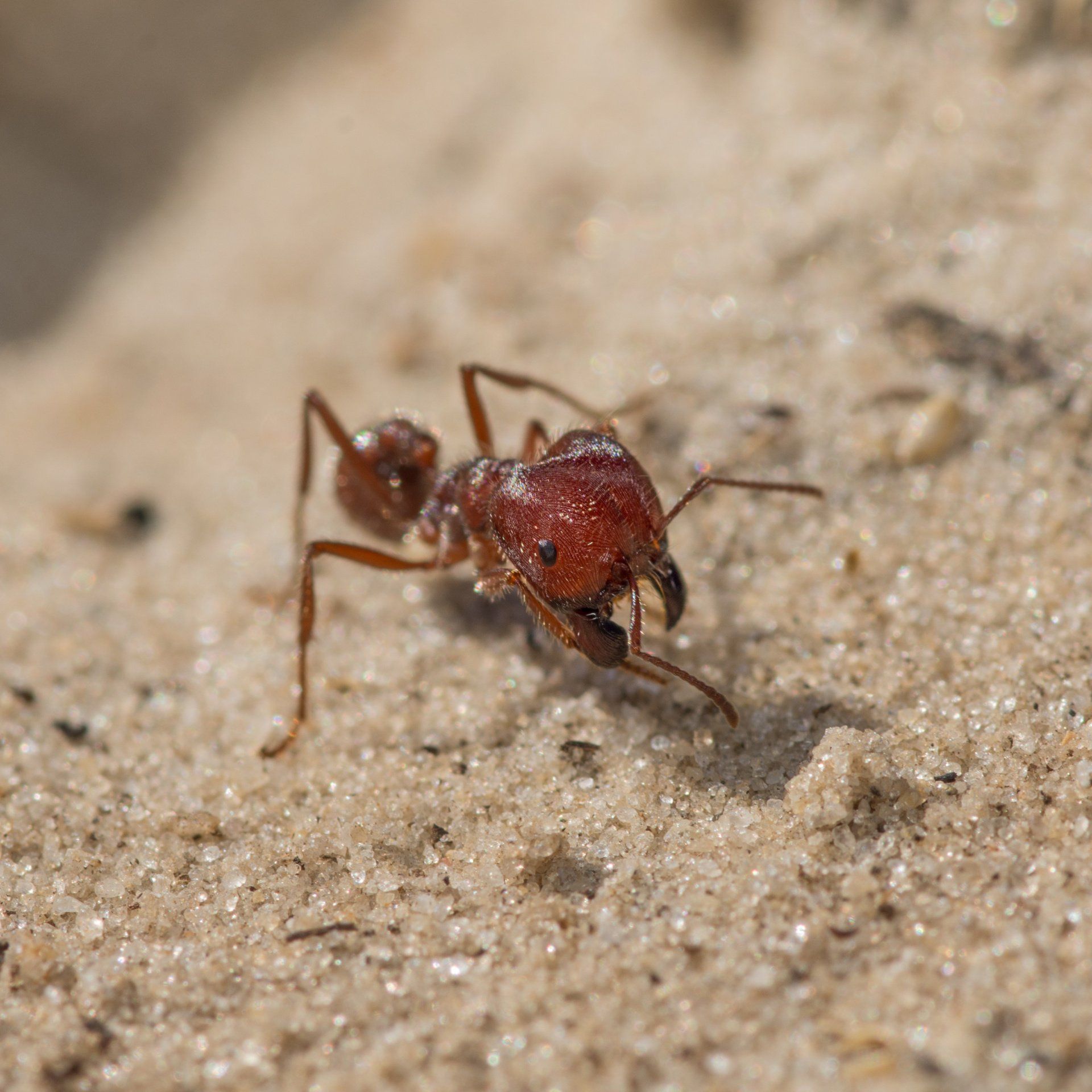
Appearance: These ants are on the larger side at around ¼ - ½ inches long and they are orange to brown in color.
Behavior: Harvester ants get their name from being one of the few ants that collect seeds and grains as their staple food source. They live for a long time, between 15-30 years
Damage: These ants have a painful sting but are reluctant to act unless the colony is threatened. They will also defoliate any vegetation around their mound.
Location: There are several species of harvester ants that are found all over the United States. The most common species are the California harvester ant and the Florida harvester ant.
Treatment: Harvester ants need to be treated with baits or a soil drench to ensure that the entire colony is impacted by pesticides. If the queen isn’t terminated, then the colony will recover.
Field Ant
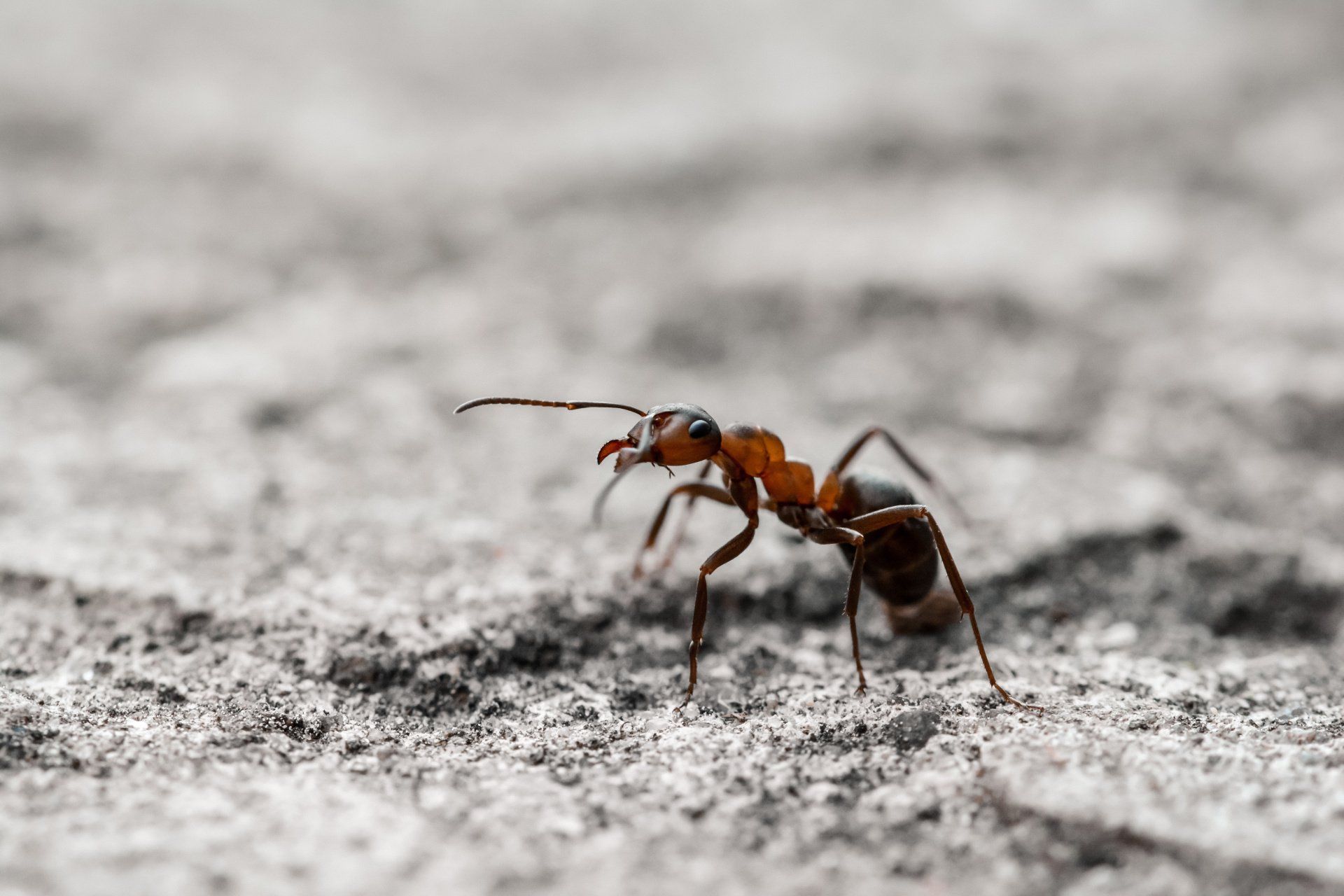
Appearance: Field ants typically range in color from yellow to red and black. They are about 1/8 – 1/4 inches long.
Behavior: These ants prefer to nest outdoors and can be found in shallow nests out in parks, lawns, and gardens. They primarily feed on honeydew which they farm from aphids but will sometimes eat other insects.
Damage: Field ants won’t cause too much trouble other than destroying the appearance of someone’s landscaping. They create massive mounds of dirt as they excavate the caverns for their colonies.
Location: Field ants are found all over the US and particularly in the southern states north of Mexico.
Treatment: Field ants can be treated with baits or soil drenches which will help ensure that the poison reaches the queen’s chambers.
Acrobat Ant
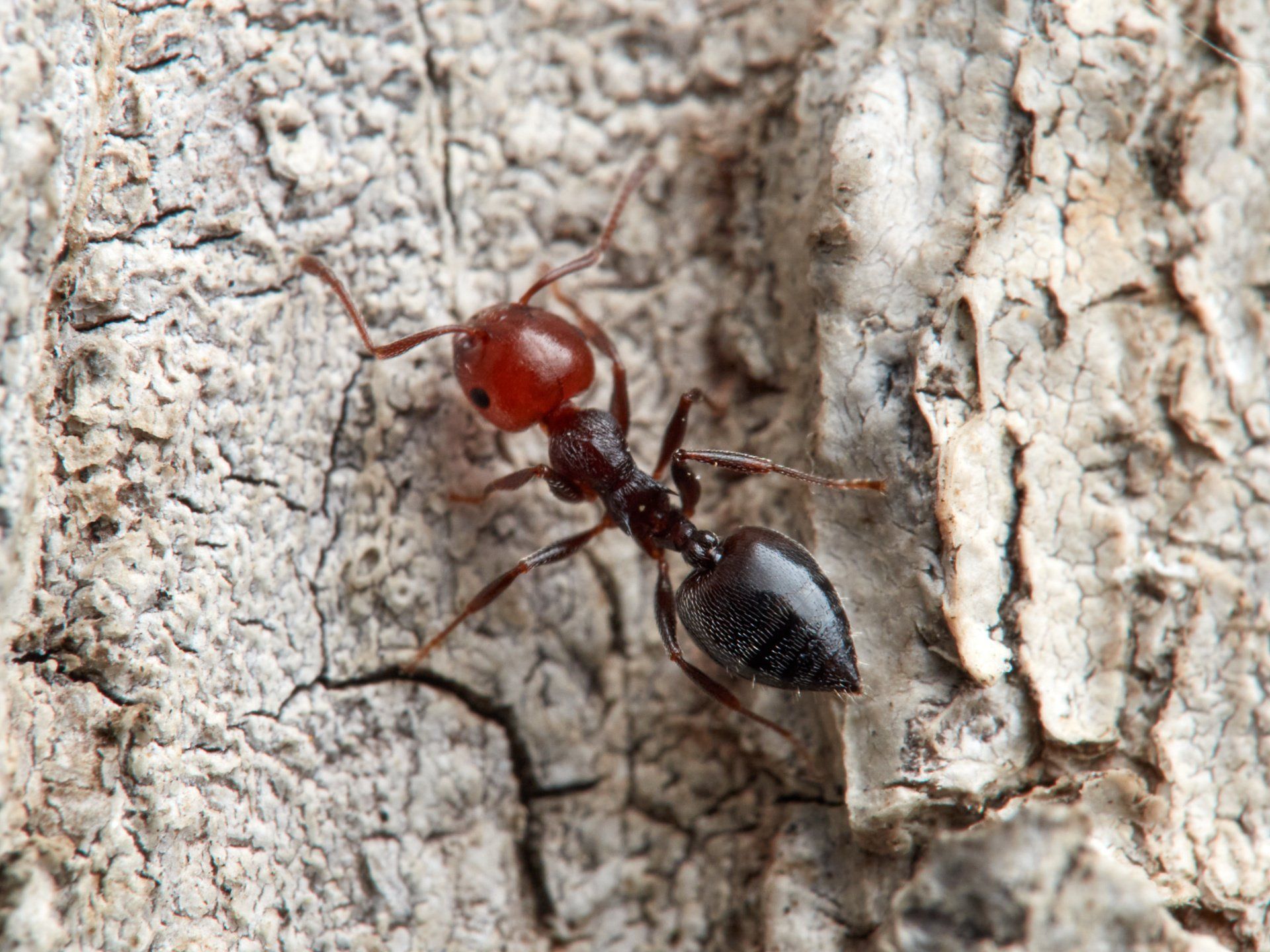
Appearance: Acrobat ants are about 1/8 in long and are dark in color. Their most distinguishing feature is their heart shaped bodies.
Behavior: Acrobat ants are known for being able to lift their head above their bodies which give them a slight advantage in being able to maneuver around. These ants are highly intelligent and will use the existing galleries and caverns created by other bugs who have previously been terminated.
Damage: While acrobat ants won’t create new damage, they can find damage caused by other wood destroying organisms and recolonize that empty space. This is why it is good to have termite and carpenter ant damage repaired.
Location: Acrobat ants are found all over the US with populations ranging from the west coast to the Atlantic Ocean.
Treatment: Acrobat ants need to be treated with baiting systems, so the workers take poison to the queen to consume. The ant queen dying will cause the entire colony to collapse otherwise it will eventually recover.
Big Headed Ant
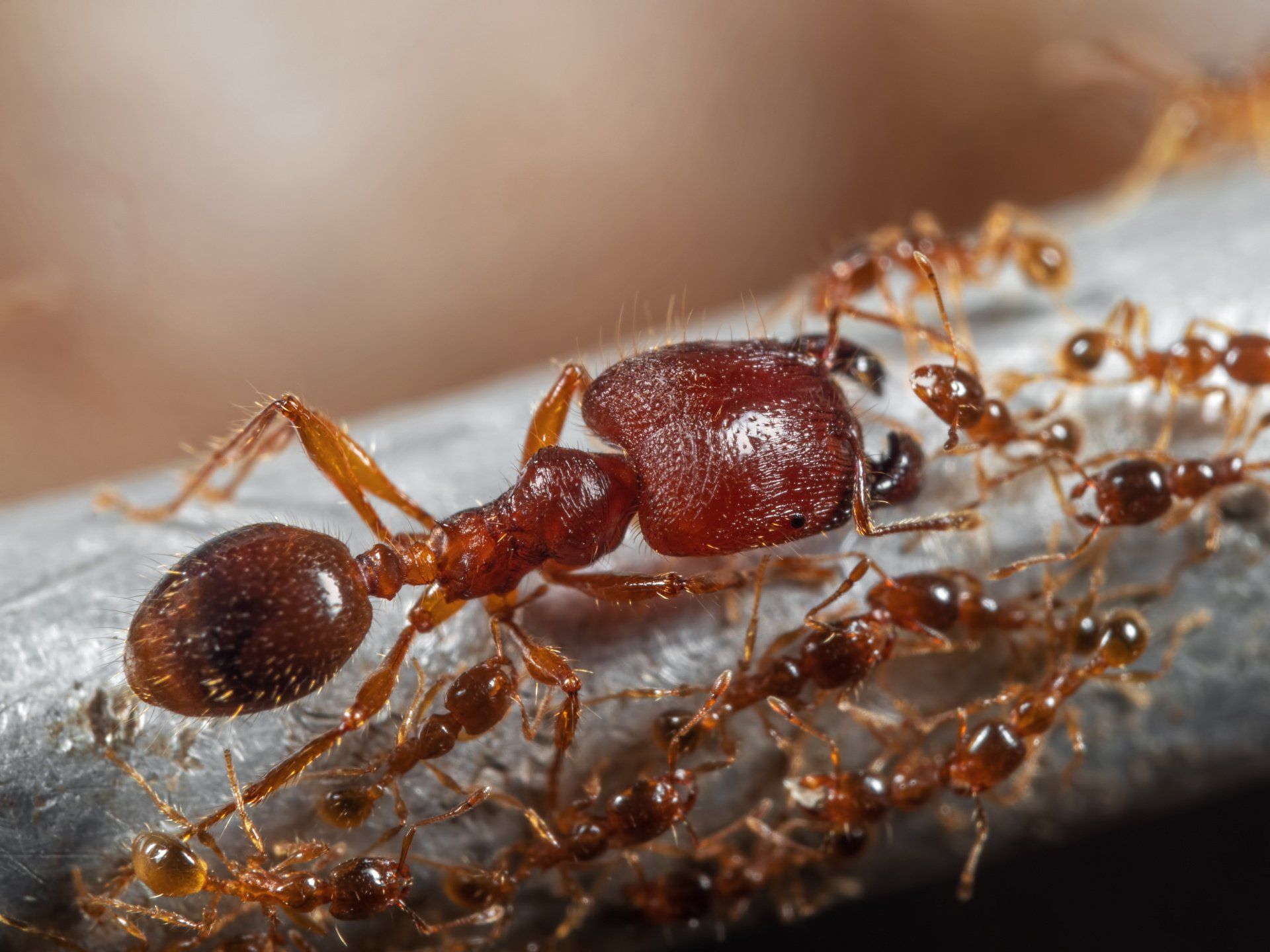
Appearance: These ants are primarily known for the soldier who have heads that are twice the size of their abdomen. They are about 1/8 inches long and have a dark coffee like color.
Behavior: These ants are docile bugs that don’t really cause much of a problem, but they do create “forager tubes” that look a lot like termite mud tubes.
Location: Big headed ants are primarily found in California, Florida, and a few other eastern states.
Treatment: Using baits and perimeter sprays are effective treatment methods that stop and prevent big headed ants from becoming an issue.
Contact EcoGuard Pest Control If You Are Dealing With Ants
If any of these species of ants are presenting a problem, it might be time to consider professional help to get rid of ants. The team at EcoGuard Pest Management is licensed and trained on how to find and exterminate your ant problem. We use an integrated pest management approach that combines several treatment strategies to ensure maximum effectiveness. Call today to schedule an inspection with an experienced ant control expert.








